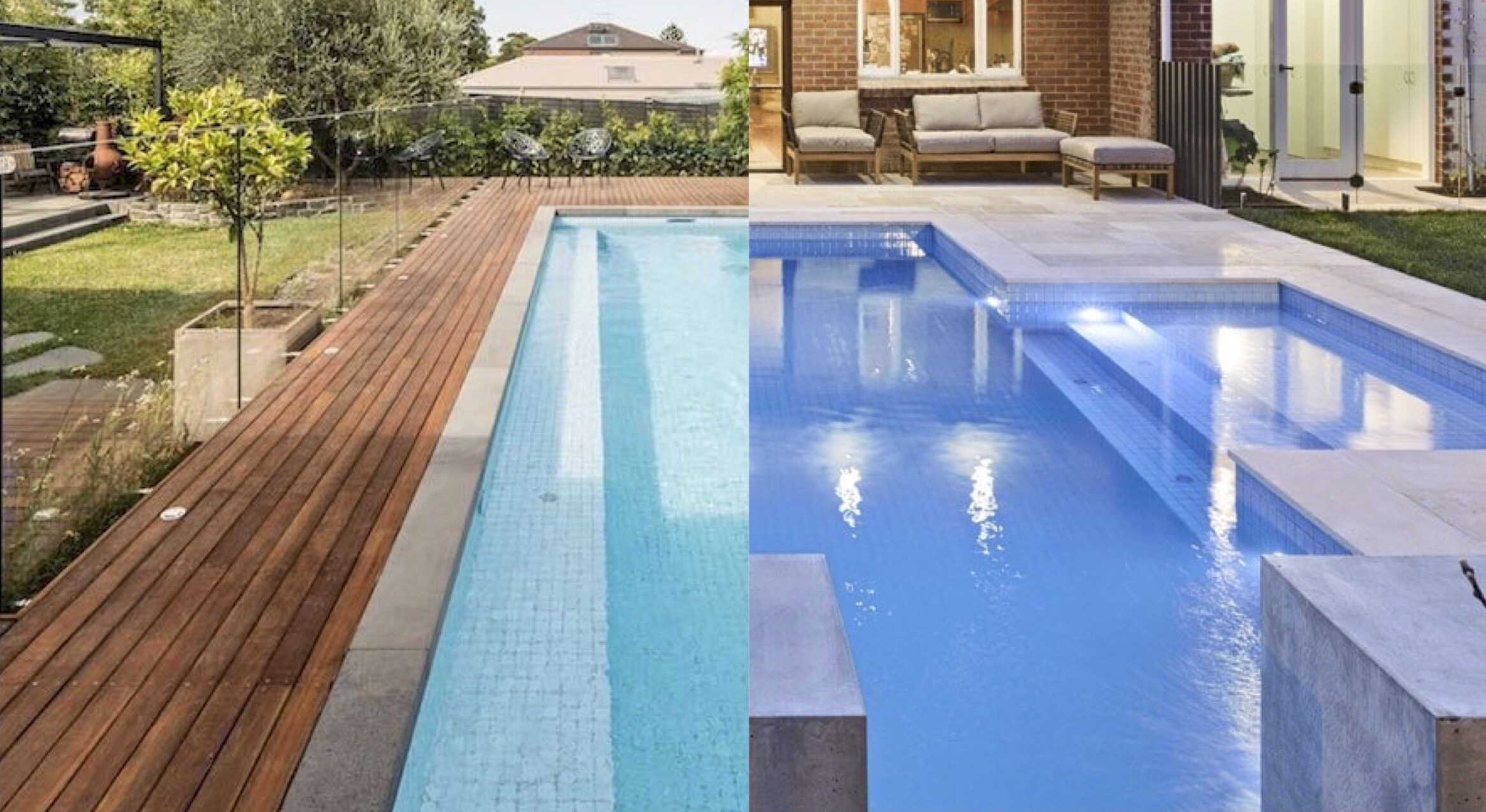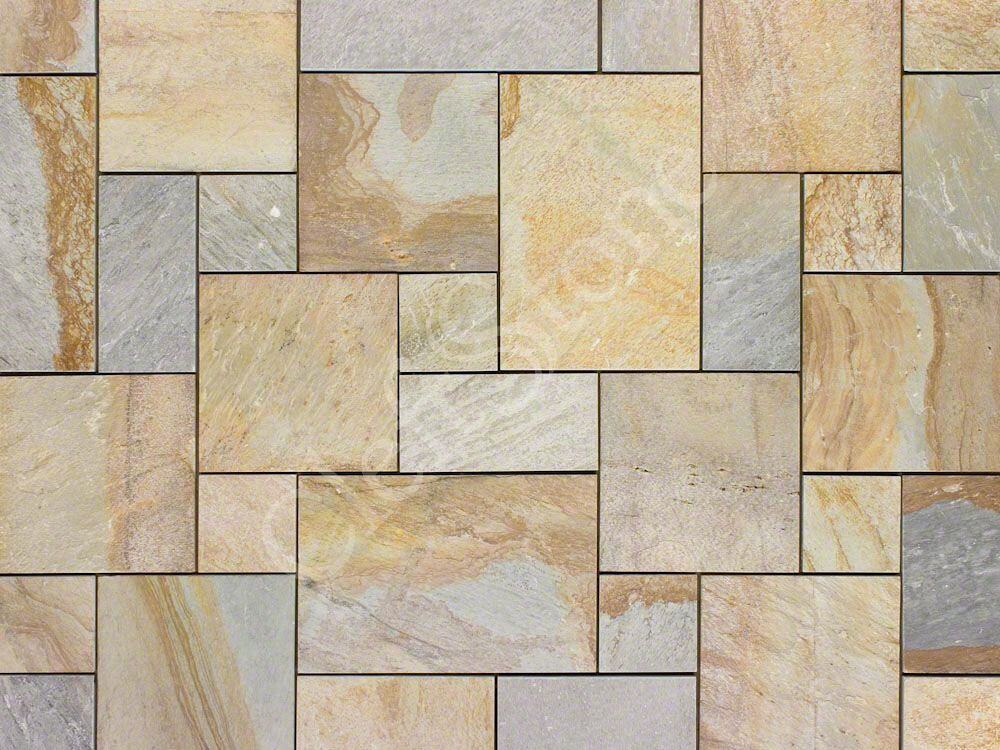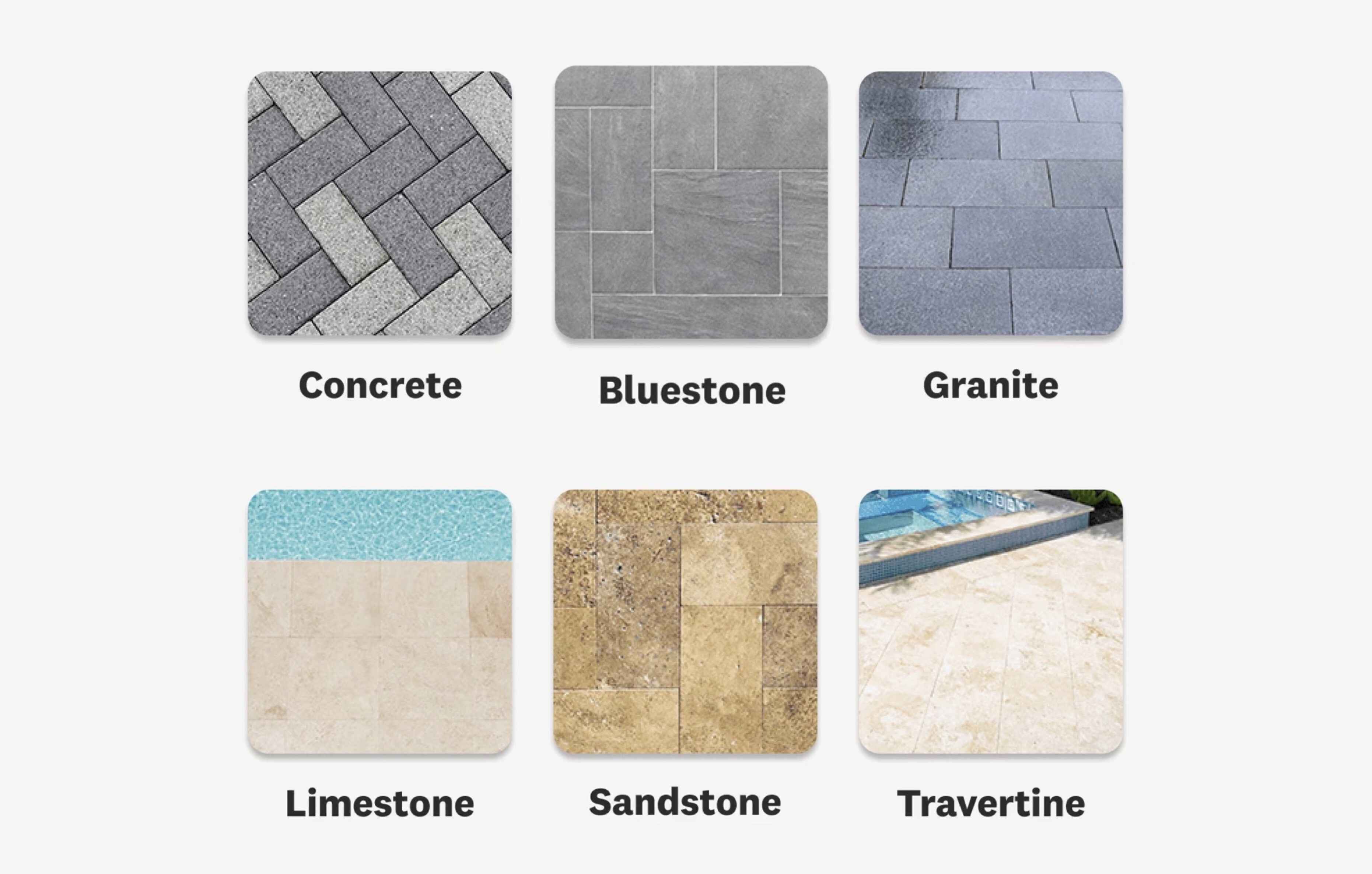
Are you putting in a new garden or giving your existing garden a big makeover? Does it include a swimming pool? Are you wondering whether you should have a deck around the pool or pave it instead?
The question of whether to build a deck or pave an area in your garden is one we've been asked many times by our clients over the past 30 years. And sometimes there is no clear-cut answer.
In this article, we'd like to take you through some of the pros and cons of having a deck vs paving an area to help you decide which might be best for your new garden project (whether or not you are installing a swimming pool).
The choice between decking and paving can come down to a multitude of factors:
- Price including materials, installation, permits, fees etc
- Aesthetics of material and design
- Suitability of site
- Any drainage issues with the site
- The desired height of the finished area
- Ongoing maintenance
The best thing to do when trying to decide between decking and paving is simply to look at some examples of both online and try to picture one or the other in your back garden.
Paving and decking each present a very different look for your garden the first thing to consider is perhaps what look you want.
Price of paving vs decking
Because a deck can look less substantial than a paved area, people are often led to believe that the decking option will be cheaper.
After all, timber can appear to be much cheaper than say expensive-looking paving tiles.
But a deck is constructed or built while paving is simply laid. This means there is a lot more work involved in the pre-planning stage with a deck.
For example for a deck, you might need to get an engineer involved in drawing up all the construction plans etc at a cost of several thousand dollars. They may also request a soil survey to see how deep the footings might need to go depending on the dampness or type of soil. You might also need to get a building surveyor involved as well which may cost another few thousand.
It all starts to add up. And this is all before anyone has even started building the deck.
With paving however, you simply fill an area with crushed rock, add a concrete slab over the top and lay the pavers on it. But with a deck, you have posts that go into the ground. These posts often need footings, which are the concrete bases that contain the posts in the ground. Then the whole deck is constructed on top of the posts.
So while the material costs of decking timbers vs pavers might appear to be cheaper, the installation and construction can often be much more expensive.
Visual aesthetics of a deck vs paved area
One determining factor for your choice between a deck and paving might just boil down to the fact that you like the look of one more than the other.
Each has a distinctive look to it.
 This Narre Warren Nth pool house from a project of ours has a paved floor.
This Narre Warren Nth pool house from a project of ours has a paved floor.
The limestone pavers harmonise with the stone walls, providing a solid floor that visually flows smoothly out to the pool area.
Would timber decking have given it the same feeling?
 This Balwyn North pool house is from another project of ours.
This Balwyn North pool house is from another project of ours.
The decking floor complements the posts of the pergola and colour of the pools' feature wall.
It's unlikely paving would have worked better.
What look are you looking for?
With decking, remember decking timbers present very strong parallel lines. If you love the look of timber and want a constructed look for your garden, then decking might be your best choice.
Also with decking now you generally have either real, natural timber or what are called composite materials. These look and can even feel like real timber but they are not. They are made from a range of materials that may include some ground-up timber or timber shavings or even sawdust, but these can be combined with glues or resins to make the decking much hardier and longer lasting than timber.
Paving offers you a much greater variety of looks and styles than decking. For a start, there are a great many variety of materials you can choose from for paving ranging from sandstone, limestone, bluestone, granite, and travertine, to porcelain and even concrete. Then there's a great variety of patterns you can lay your pavers in, ranging from Modular/French/Ashlar to Herringbone, Crazy, Filetti, Tessellate and more.
Suitability of a site for decking or paving
Generally, decking is better for an elevated construction where it will be raised off the ground. Paving however tends to be laid just above or at ground level.
 For this Glen Iris project we considered decking was most appropriate due to its raised level.
For this Glen Iris project we considered decking was most appropriate due to its raised level.
If height is an issue or you have a block with a considerable slope, a deck may be the best idea. It can be much cheaper to build a deck on a block with a steep slope than to pave the same area. This is because you will often have to build up a tremendous amount of soil fill to create a paved surface for the same area to the same height.
If you are installing a pool on a block with a considerable slope you may find it much cheaper to build a deck around it, than to pave it.
Ultimately if money is not an issue for you and you really want to pave your sloping block then it is possible to do this. However, you may need retaining walls or to pave all the sides of the areas as well as the top.
As a rule of thumb, if the area is going to be at any point more than 1 metre off the ground, it is usually best to go for decking rather than paving. The more elevated the finished surface will be, the more likely it will be that it's better to build a deck.
When planning a deck, drainage also needs to be considered. If you have very damp soil, then this could make the timber posts of the deck rot very quickly. Requiring you to install concrete footings with post anchors to keep them from being in contact with the soil.
Paving on the other hand can be laid almost anywhere without a worry.
Maintenance of your deck or paved area
In terms of maintenance, there is no doubt that decking requires much more work than paving.
Even though new composite decking materials claim to last longer without needing to be resealed or re-oiled like natural timber decks, they still need work.
A timber deck will need to be resealed or re-oiled every few years or so.
By contrast, all that is really required for paving is to occasionally hose it down. You might need to scrub it with a stiff broom sometimes to get off mould or use a pressure washer.
Could you combine decking and paving?
If you can't really decide between the two, there is a possibility you might like to use a combination of both.
We've seen this many times before.
Essentially you mostly pave the area around the pool but you might like to create a deck for the area closer to the outdoor kitchen for example.
 For this Hawthorn project we included a deck to transition from inside the house to the pool as this was much less complex than having it paved.
For this Hawthorn project we included a deck to transition from inside the house to the pool as this was much less complex than having it paved.
The pool cover also stored conveniently under the timber deck so it could easily be rolled out when required.
Some people just like to inset a small area of timber decking into one part of the paved area. For example, if you want your pool cover roller to be installed in-ground so it can be out of sight, some people choose to house this in a section of decking. This can give you easier access to your pool cover roller for maintenance, repairs or even replacement.
If the decking inset is just a small section there can be no need for all the other steps involved in constructing a regular deck.
We hope this article has helped you decide whether decking or paving would be more suitable for your project. If you would like more information about permits for decking, which decking materials are better or which pavers to use, please take a look at any of the following articles:
Additional articles on decking and paving in Melbourne...
Do I really need a permit for my new deck?
Which is better - timber decking or composite?
What are the best types of pavers to use around my pool?
Which paving pattern is right for my garden?
If you have still have any other outstanding questions relating to decking or paving, please feel free to contact us by phone or email.
Founder of Whyte Gardens



